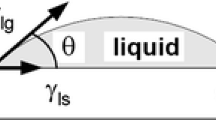Abstract
The first step in the surface mount technology is the printing of the solder paste. The amount of solder placed on the cooper pad is important in guaranteeing an acceptable quality of soldering. Experimental works and studies for this process consume time and cost. There is a need for a cost-effective method to study this process. The simulation method has shown as a good alternative method for the solder paste printing process. Thus, this study presents a 3D computer simulation of stencil printing for the deposited volume prediction of solder paste. The volume of fluid (VOF) method integrated with the cross viscosity model was used for the numerical simulation. A widely used industry lead-free solder paste Sn/Ag/Cu (SAC305) of type 3 was utilized. The experimental and simulation results for filling volume of solder paste at different aperture sizes were compared. Results for different aperture sizes show a similar trend and agree well with the experimental results. This study was extended to investigate stencil printing at different squeegee speeds and aperture sizes. The squeegee speed of 35 mm/s provided the highest solder paste volume in the aperture with acceptable printing time.











Similar content being viewed by others
References
Tsai T-N, Liukkonen M (2016) Robust parameter design for the micro-BGA stencil printing process using a fuzzy logic-based Taguchi method. Appl Soft Comput 48:124–136. https://doi.org/10.1016/j.asoc.2016.06.020
Krammer O, Molnár LM, Jakab L, Szabó A (2012) Modelling the effect of uneven PWB surface on stencil bending during stencil printing process. Microelectron Reliab 52:235–240. https://doi.org/10.1016/j.microrel.2011.08.012
Krammer O (2014) Finite volume modelling of stencil printing process. 2014 IEEE 20th Int Symp Des Technol Electron Packag SIITME 2014 M:79–82. https://doi.org/10.1109/SIITME.2014.6966998
Manessis D, Patzelt R, Ostmann A, Aschenbrenner R, Reichl H (2004) Technical challenges of stencil printing technology for ultra fine pitch flip chip bumping. Microelectron Reliab 44:797–803. https://doi.org/10.1016/S0026-2714(03)00361-5
Kay RW, Stoyanov S, Glinski GP, Bailey C, Desmulliez MPY (2007) Ultra-fine pitch stencil printing for a low cost and low temperature flip-chip assembly process. IEEE Trans Components Packag Technol 30:129–136. https://doi.org/10.1109/TCAPT.2007.892085
Durairaj R, Jackson GJ, Ekere NN, Glinski G, Bailey C (2002) Correlation of solder paste rheology with computational simulations of the stencil printing process. Solder Surf Mt Technol 14:11–17. https://doi.org/10.1108/09540910210416422
Rusdi MS, Abdullah MZ, Aziz MSA et al (2018) Multiphase flow in solder paste stencil printing process using CFD approach. J Adv Res Fluid Mech Therm Sci 46
Thakur V, Mallik S, Vuppala V (2015) CFD simulation of solder paste flow and deformation behaviours during stencil printing process. Int J Recent Adv Mech Eng 4:1–13. https://doi.org/10.14810/ijmech.2015.4101
Stoyanov S, Kay R, Bailey C, Desmulliez M (2007) Computational modelling for reliable flip-chip packaging at sub-100 μm pitch using isotropic conductive adhesives. Microelectron Reliab 47:132–141. https://doi.org/10.1016/j.microrel.2006.01.004
Seo WS, Kim JB (2013) Filling analyses of solder paste in the stencil printing process and its application to process design. Solder Surf Mt Technol 25:145–154. https://doi.org/10.1108/SSMT-Oct-2012-0022
KravČÍk M, Vehec I (2010) Study of the rheological behaviors of solder pastes. 10th Sci Conf Young Res
Zhang SS, Zhang YJ, Wang HW (2010) Effect of particle size distributions on the rheology of Sn/Ag/Cu lead-free solder pastes. Mater Des 31:594–598. https://doi.org/10.1016/j.matdes.2009.07.001
Ferng Y, Su A (2007) A three-dimensional full-cell CFD model used to investigate the effects of different flow channel designs on PEMFC performance. Int J Hydrogen Energy 32:4466–4476. https://doi.org/10.1016/j.ijhydene.2007.05.012
Rusdi MS, Abdullah MZ, Chellvarajoo S, Abdul Aziz MS, Abdullah MK, Rethinasamy P, Veerasamy S, Santhanasamy DG (2019) Stencil printing process performance on various aperture size and optimization for lead-free solder paste. Int J Adv Manuf Technol 102:3369–3379. https://doi.org/10.1007/s00170-019-03423-9
Khor CY, Ariff ZM, Ani FC, Mujeebu MA, Abdullah MK, Abdullah MZ, Joseph MA (2010) Three-dimensional numerical and experimental investigations on polymer rheology in meso-scale injection molding. Int Commun Heat Mass Transf 37:131–139. https://doi.org/10.1016/j.icheatmasstransfer.2009.08.011
Son MJ, Kim I, Yang S, Lee TM, Lee HJ (2016) Employment of roll-offset printing for fabrication of solder bump arrays: harnessing the rheological properties of lead-free solder pastes using particle size distribution. Microelectron Eng 164:128–134. https://doi.org/10.1016/j.mee.2016.07.012
Azimi M, Mirjavadi SS, Asli SA (2016) Investigation of mesh sensitivity influence to determine crack characteristic by finite element methods. J Fail Anal Prev 16:506–512. https://doi.org/10.1007/s11668-016-0117-y
Azimi M, Mirjavadi SS, Asli SA, Hamouda AMS (2017) Fracture analysis of a special cracked lap shear (CLS) specimen with utilization of virtual crack closure technique (VCCT) by finite element methods. J Fail Anal Prev 17:304–314. https://doi.org/10.1007/s11668-017-0243-1
Author information
Authors and Affiliations
Corresponding author
Additional information
Publisher’s note
Springer Nature remains neutral with regard to jurisdictional claims in published maps and institutional affiliations.
Rights and permissions
About this article
Cite this article
Rusdi, M.S., Abdullah, M.Z., Ishak, M.H.H. et al. Three-dimensional CFD simulation of the stencil printing performance of solder paste. Int J Adv Manuf Technol 108, 3351–3359 (2020). https://doi.org/10.1007/s00170-020-05636-9
Received:
Accepted:
Published:
Issue Date:
DOI: https://doi.org/10.1007/s00170-020-05636-9




